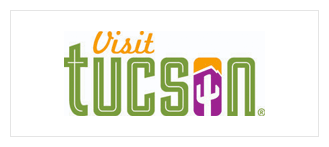 Read About Median Household Income in Tucson, Arizona MSA
Read About Median Household Income in Tucson, Arizona MSA
How are we doing?
Median Household Income (2023)

In 2023 the inflation-adjusted median household income was $67,929 for the Tucson Metropolitan Statistical Area (MSA), more than $10,000 less than the nation and well below the state of Arizona. When compared to peer western MSAs, Tucson ranked near the bottom, above only El Paso. San Diego and Denver at over $102,000, had the highest median household incomes of the 12 MSAs. Overall, Tucson has displayed an upward trend in median household income since 2000. This upward trend reflects an 84.8% increase in the median household income between 2000 and 2023. Tucson’s median household income has increased by 33.1% in just the last five years.
Why is it important?
Median household income is one measure, among many, that gauges the economic well-being of a region. Median household income provides information about the financial resources available to households. Higher household incomes are commonly associated with a greater means of acquiring goods and services. Household income is closely tied to employment levels, educational attainment, and regional economic opportunities.
How do we compare?
The median household income in 2023 for the Tucson MSA’s Hispanic population was $60,621, more than $8,000 lower than the Hispanic population nationally. All races and ethnicities in Tucson fall short of the national median household income level. In 2023, there was a substantial gap between the median income for Hispanic households and white, non-Hispanic households within Tucson, with a difference of nearly $13,000. Reliable data for the Native Hawaiian and Pacific Islander population was not available for the Tucson MSA in 2023.Tucson’s population aged 65 and older is the only age category in which the MSA fares better than the nation. The median household income for the 65 and older age group in Tucson was $59,457, slightly higher than the nation at $57,108. In contrast, the 45–64 and 25–44 age groups fare better within the state of Arizona and nationwide when compared to Tucson. The median household income for the 45–64 age group in Tucson was $82,560, whereas the national rate was more than $12,000 higher in 2023. Likewise, the 25–44 age group earned $13,472 dollars less in Tucson when compared to the U.S.
When comparing the median income for families with children under the age of 18 in the Tucson MSA, married-couple families had the highest at $111,381. Male-headed families and female-headed families with no spouse present had median incomes of $51,623 and $36,933, respectively. In Tucson, male-headed families with no spouse present earned nearly $15,000 more than female-headed families with no spouse present. Married-couple families often have a substantially higher median income than male- or female-headed households with no spouse present, due to the possibility of dual wage earners.

What are the key trends?
The median household income in the Tucson MSA has followed an upward trend since 2000. During the Great Recession, the median household income in Tucson fell. The nation also posted a decrease in median household income during the Great Recession but to a much lesser extent than Tucson or Arizona. By 2013, the U.S. had fully recovered to the pre-recession median household income level while Tucson followed in 2015. Tucson posted rapid growth in median household income between 2018 and 2023 at 33.1%, slightly faster than the U.S. growth of 30.3%, but lagged behind the state at 36.8%.
How is it measured?
Household income includes the sum of income earned by individuals 15 years and older living in a household during the calendar year, whether they are related to the head of the householder or not. A person living alone is also counted as a household. Income includes wages and salaries, transfer payments, child support, rental receipts, dividends, and interest, as well as other kinds of income routinely received. Median household income has been adjusted for inflation. Median refers to the midpoint of the income distribution, with half the number of households receiving income above the midpoint and half receiving income below. It is important to note that a household often includes more than one income earner. Median Household Income data is from the Census Bureau’s American Community Survey (ACS). The ACS is a nationwide rolling-sample survey that produces one and five-year estimates on demographic, social, housing, and economic measures. All data provided in this analysis utilized five-year estimates. Note that the ACS five-year estimates are produced over a five-year time period and can only be compared to non-overlapping five-year estimates (for example 2005-2009 and 2010-2014).












